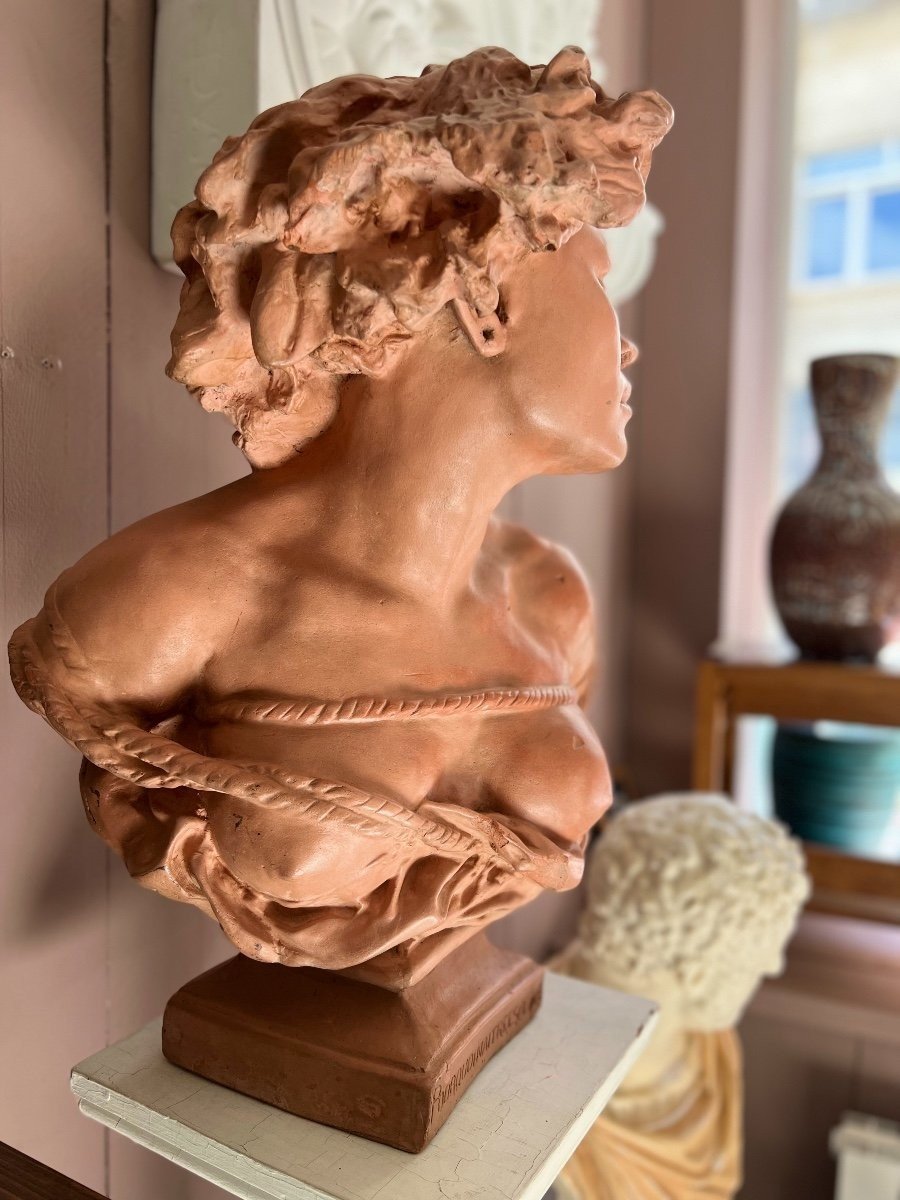Why Born a Slave (Replica after the original work)
Tinted terracotta or plaster, 60 cm in height, base 18 x 20 cm
Provenance:
Private collection
Jean-Baptiste Carpeaux is one of the most influential sculptors of the 19th century, primarily known for his works imbued with realism and expressiveness. Trained in the classical tradition at the École des Beaux-Arts in Paris, he rose to prominence during the Second Empire thanks to his skill in capturing human dynamics and emotion with striking force. Among his most famous works, Why Born a Slave demonstrates his commitment to both aesthetic and political causes, in a context where the issue of slavery abolition, proclaimed in France in 1848, remained a pressing subject.
This bust, depicting a chained Black woman, is a faithful replica of one of his masterpieces created around 1868. The inscription engraved on the base, "Why Born a Slave," underscores the sculptor's indignation towards the injustice and oppression endured by slaves. The woman's face, turned towards the sky, expresses both pain and a yearning for freedom. The delicate features and intense gaze reveal a profound humanity, which is characteristic of Carpeaux's style.
This terracotta replica retains the expressive vigor of the original, with meticulous attention to the hair and anatomy, showcasing the technical virtuosity of the sculptor. Carpeaux was a contemporary of artists such as Auguste Rodin and Antoine-Louis Barye, sharing with them a passion for the realistic representation of the human body. The work is set within a post-revolutionary context, where the ideals of liberty and equality still strongly resonate.








































 Le Magazine de PROANTIC
Le Magazine de PROANTIC TRÉSORS Magazine
TRÉSORS Magazine Rivista Artiquariato
Rivista Artiquariato